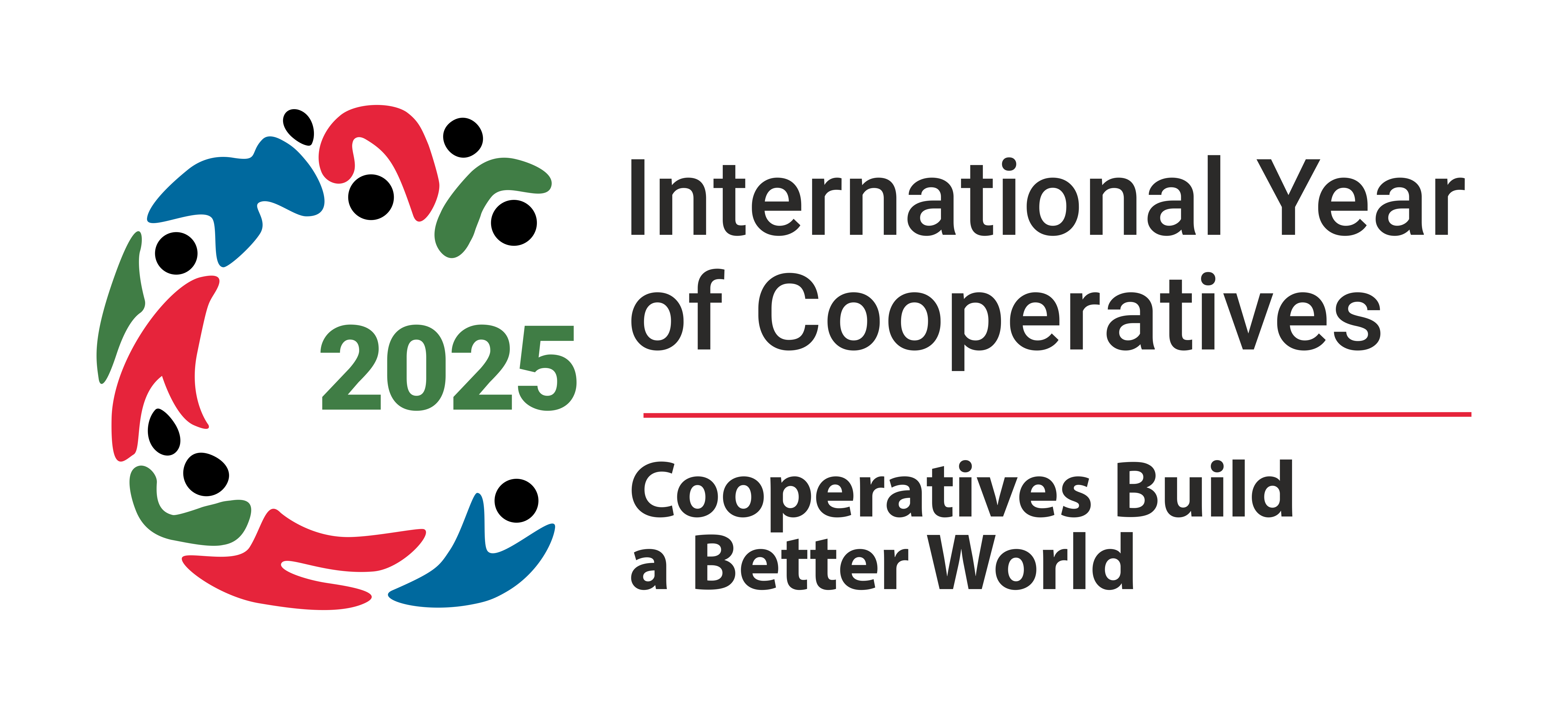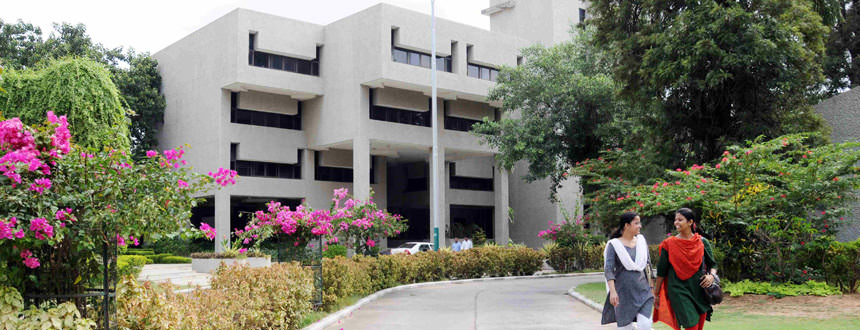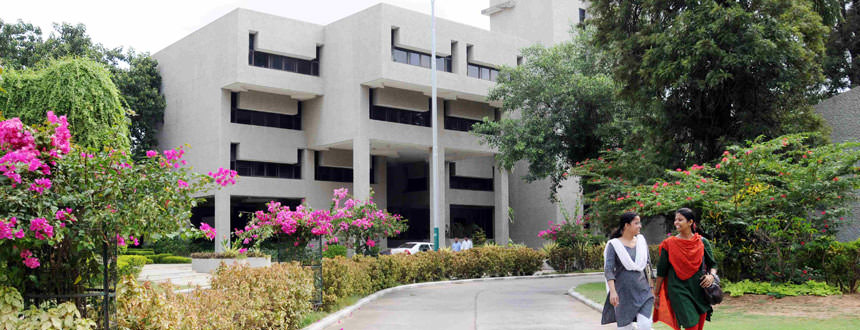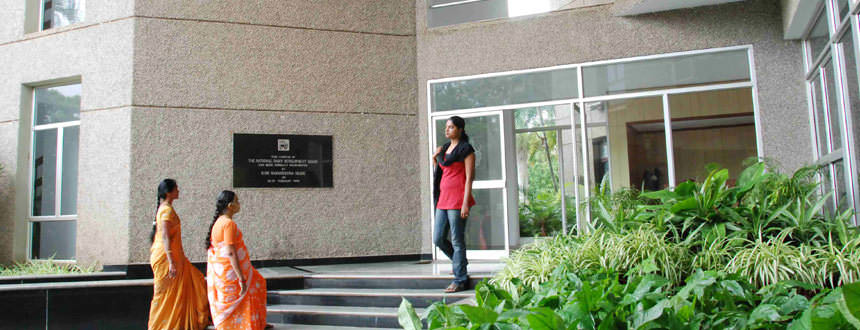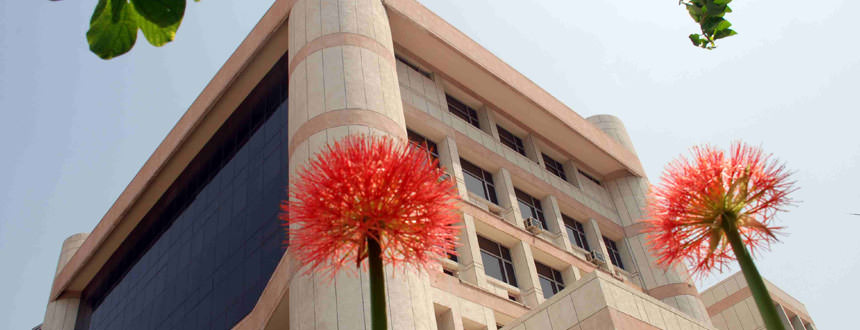First Dr B. P. Pandey Memorial Oration addressed by Shri Meenesh Shah - 23 February 2023
1st Dr B. P. Pandey Memorial Oration
U.P. Pandit Deen Dayal Upadhyaya Pashu Chikitsa Vigyan Vishwavidyalaya Evam Go Anusandhan Sansthan (DUVASU)
Mathura, Uttar Pradesh
12:30 pm – 23rd February, 2023
“Dairy Sector: Progress, Impact and Challenges”
Prof (Dr.) Anil Kumar Srivastava, Vice Chancellor, Uttar Pradesh Pandit Deen Dayal Upadhyaya Pashu Chikitsa Vigyan Vishwavidyalaya Evam Go-Anusandhan Sansthan,
Dr PK Shukla, Dean, College of Veterinary Science & Animal Husbandry, Mathura
Dr AK Madan, Registrar, Faculty Members, Students, Distinguished guests and all other participants
It is a great honour to be invited to deliver the 1st Dr B. P. Pandey Memorial Oration. Dr B.P Pandey, was an eminent scientist who dedicated his life for advancement of Veterinary Parasitology. The dairy fraternity will always be indebted to him for his accomplishments and he will certainly continue to inspire generations of veterinarians to come.
The topic which I shall try to cover today is “Dairy Sector: Progress, Impact and Challenges”.
All of us know that tradition of cattle rearing and milk consumption is as ancient as civilization and culture of India. India was once known as land of milk and honey.
However, there did come a time when our country had to rely heavily on imports for meeting its demand for milk.
But, thanks to collective efforts of millions of landless, small & marginal dairy farmers of our country, India could not only become self-sufficient in milk production but also the world’s leading milk producer.
The role of dairying in health and well-being of an individual is well-known. But another important aspect that needs to be kept in mind is the fact that dairy sector in India is a crucial source of employment generation and a steady income for the majority of small and marginal farmers.
I recall, our founder Chairman Dr Vergeshe Kurien always used to remind us that “We are not into the business of dairying instead we are into the business of rural prosperity”.
Our country has come a long way from being a milk deficit nation to becoming an Atmanirbhar nation in milk.
Today, milk is the single largest agricultural commodity contributing 5 percent to the national economy and giving employment to more than 8 Crore rural households directly. Milk was valued at Rs 9.3 lakh Crore in 2020-21, which is more than the combined value of cereals and pulses.
Milk production in India has grown by more than 6 percent per annum during the year 2014-15 and 2020-21 as against global growth rate of about 2 percent. As a result of prudent policy interventions from time to time, India continues to rank first in the world since 1998.
India achieved an annual milk output of 21.0 Crore tonnes during the year 2020-21 as compared to 14.6 Crore tonnes in 2014-15.
India alone contributes to about 23 percent to the global milk production, which is even more than that of the combined production of all European Union countries. As per the projections given by the NITI Aayog, the milk production in India is expected to reach to about 30 Crore tonnes by 2030.
The per capita availability of milk has reached a level of 427 grams per day during the year 2020-21, which is more than the world’s average of around 310 grams per day in 2020.
Dairy farming provides multifarious benefits to rural households. Unlike agricultural crops, the income from milk generates daily cash flow and also helps in providing nutrition to family members throughout the year. It also provides manure for enhancing soil productivity and male animals as source of draught power for farm operations.
The changing climate has been adversely affecting agriculture leading to frequent crop failures. During such instances, dairying provides a steady source of alternate income throughout the year.
The distribution of animal asset is more equitable than that of agricultural land. The marginal and small farmers constitute about 81 percent of the rural households and they own about 54 percent of the total agricultural land, however, they own about 82 percent of the total female bovine population. Dairying provides livelihood to rural masses and also empowers them both economically and socially.
In the organized sector, the Producer Owned Institutions (POIs) like the Dairy Cooperatives and Milk Producer Organisations have played a pivotal role in growth of dairying in India over the decades. They have empowered the dairy farmers to run their own enterprise at the grassroots democratically. At the same time, they have also ensured uninterrupted supply of quality and safe milk & milk products at affordable prices to the consumers across the country.
Currently, there are 22 State Federations/Apex Bodies, 228 Milk Unions and 28 Marketing dairies operating in the cooperative dairy sector in the country. The dairy cooperatives are now spread over about 2.2 lakh villages covering about 1.8 Crore dairy farmers across about 475 districts of the country. The cooperative milk procurement now has reached at 650 Lakh Kg per day, while selling milk and milk products in 5000 cities and towns of the country.
This model of cooperatives has proved to be highly successful in safeguarding the interests of the milk producers by providing ensured market access, insulating them from market fluctuations and other unforeseen events such as outbreak of Covid-19 pandemic.
After realizing money for their sale of milk to the consumers, the dairy cooperatives pay to their members in a manner where dairy farmers receive the maximum share of the consumer rupee (about 60-75 percent), which is highest in the World.
During 2020-21, the POIs have paid back about Rs 65,000 Crore to their members. This is equivalent to pumping almost Rs 200 Crore daily into the rural economy, the backbone of India, which probably no other industry does.
More than 5 decades of relentless efforts of GoI/NDDB in the form of programmes like Operation Flood, Perspective Plan, and National Dairy Plan has led to such achievements.
While our journey in dairy sector is remarkable, at the same time future is all the more promising.
India has the highest number of bovines in the World. There were 30.3 Crore bovines in 2019 which included 19.3 Crore cattle and 11 Crore buffaloes. India is also blessed with a diverse genetic pool of magnificent indigenous cattle and buffalo breeds which are more suited for milk production in the Indian conditions.
Demand for milk and milk products particularly value added milk products has been steadily rising in our country, which provides huge opportunities for our dairy industry and benefit our farmers.
The total size of dairy market was about Rs. 13 lakh Crore in 2021. The dairy market has been growing at about 15 percent per annum during the last 15 years and is expected to reach a market size of about Rs. 30 lakh Crore by 2027. By 2050, India would become the world’s most populous country – about 1.7 billion and about 600 million middle income class.
The market for liquid milk is expected to grow by about 16 percent during the next 5-6 years whereas for products like cheese, flavoured milk, lassi, butter milk, whey and organic milk, the market will grow at more than 20 percent per annum. The annual growth of other traditional dairy products like paneer, ghee, ice-cream, khoa, curd, etc. would be in the range of 11 percent to 20 percent.
Growth in population and consumption would continue to stimulate demand for milk and milk products.
Meeting this growing demand for milk, mainly from domestic production, to continue to maintain our self-sufficiency and food and nutritional security as well as increased volumes of milk processed, would translate to enormous opportunities for milk producers, processors and other stakeholders in the entire dairy value chain.
However, all these achievements and future opportunities do not mean that the sector is devoid of issues and challenges. Issues and challenges which confront the dairy sector today are an impediment towards realizing the full potential of the sector for growth and prosperity of our country particularly in rural areas.
Therefore, we need to reflect upon each element of dairy value chain i.e production, processing and marketing and benchmark it with the best in the sector, find out the factors responsible for inefficiencies and take remedial actions.
Some of the areas where focused interventions would be required are
- Improvement in animal productivity through interventions in breeding, nutrition and health,
- Dominance of unorganized sector
- Food safety and quality
- Regional variations
- Low share in world trade
- New product development and value addition
- Adaptation to climate change
- Governance and management of Dairy Cooperatives
Improvement in Animal Productivity
Animal Breeding
Even though we are the world’s largest milk producer, the Indian bovine productivity of about 5 Kg per day is much lower than the global average productivity of 20 Kg per day.
Low productivity of a sizeable number of bovines due to inferior genetic makeup, limited feed resources coupled with poor health of these animals leads to decline in profits for the farmer and this certainly is not good for the dairy industry.
The good news is that India has taken concrete steps towards achieving genetic progress in the country so that our farmers can have fewer animals but more milk production per animal. Genetic improvement programmes aim for the improvement of future generations. For this to happen, the availability of performance records are a must for genetic evaluation of animals and subsequent ranking.
Performance recording and genetic evaluation based on traditional methods like Pedigree Selection and Progeny Testing have been initiated covering major breeds since last 2 decades. Recently, genomic selection has been introduced to select young animals based on their DNA information and thus accelerate genetic progress. Artificial Insemination using Frozen Semen doses is widely used for the dissemination of improved genetics.
Necessary infrastructure has been developed in India to implement Assisted Reproduction Technologies for faster multiplication of selected cows and buffaloes. Technologies like sexing of semen to produce female calves, OPU-IVF technology to multiply elite cows and buffaloes etc., have great potential to offer benefits to farmers.
Despite such developments, the sector is facing various constraints and challenges. Unlike major dairy advanced countries, running long-term, capital-intensive, field-based scientific programmes through the establishment of robust performance recording infrastructure is always challenging due to small-holder conditions in our country.
However, the sector is striving to overcome these challenges through appropriate institutional arrangements, technical interventions, and various innovative approaches.
Animal Nutrition
More alarming situation is that even the genetic potential of the milch animals has not been met due to inadequacies of feed and fodder to the milch animals.
As per the 34th Parliamentary Standing Committee report, India will face shortage of 117 million tonnes of dry fodder, 400 million tonnes of green fodder and 40 million tonnes of concentrate by 2025.
Despite shortage of feed resources, farmers often are not able to use the available feed resources judiciously and provide balanced ration to the dairy animals owing to lack of scientific knowledge on feeding and management. These invariably lead to economic loss to the dairy farmers.
Therefore, there is great potential for more efficient use of our existing feed resources and add value to it to support animal nutrition requirements of a more productive milch animal herd.
NDDB is addressing this by implementation of Ration Balancing Advisory services, promotion of scientific fodder conservation technologies, use of certified/ truthfully labelled seeds for fodder production, calf rearing programmes, crop residue management, total mix rations, development of feed supplements etc.
Animal Health
A large population of our dairy farmers are landless or marginal and can ill afford costly treatment options. Transferring knowledge to the farmer on the safe, cost effective, efficacious alternate treatment options like ethno-veterinary medicine (EVM) to manage common ailments using herbs and spices that are usually available in the farmers’ home is the need of hour.
This would help them avoid excessive treatment expenses for simple ailments and, also filter out cases that really call for a veterinarian’s attention. NDDB has been working since the last 5 years to propagate EVM usage as a cost-effective, efficacious and farmer friendly alternate approach for around 30 odd common ailments including mastitis with very encouraging results. This is also helping in reducing the indiscriminate use of antibiotics.
Prevalence of infectious animal diseases like FMD in the country is not only causing significant economic losses to our dairy farmers in terms of milk yield and mortality, but is also limiting the export opportunities for dairy commodities. The Govt. of India has initiated an ambitious National Animal Disease Control Programme (NADCP) for controlling FMD and Brucellosis throughout the country with an aim to control and finally eradicate these infections.
Dominance of Unorganised Sector
Although dairy sector is fairly organized as compared to various other food sectors such as fruits and vegetables which is organized to the level of about 5%, the organized dairy sector still constitute only 35% of the Indian dairy market share.
Compliance to milk quality and safety for the milk handled by the unorganized sector remains to be a big challenge. Concerted efforts are being made by GOI and NDDB to enhance and modernize the milk processing/ quality testing capacities of the organised sector through Dairy Infrastructure Development Fund (DIDF), Animal Husbandry and Infrastructure Development Fund (AHIDF) and National Programme for Dairy Development (NPDD).
Food Safety and Quality
Quality and Food Safety is a critical factor to have an edge in the domestic and international market. However, as substantial quantity of milk in India is still handled by the unorganized sector, maintaining quality of such milk remains a challenge. The shelf life of our pasteurized milk when stored at temperatures below 40C is 2 days while global benchmark is 14 days.
Quality of milk is being adequately addressed by the organized sector especially the dairy cooperatives through various interventions viz. a) creating awareness on quality and food safety; b) introduction of international Food Safety Management System; c) Quality Assessment System which includes Quality Mark (Process Certification) and Conformity Assessment Scheme (for process and products); d) Aligning FSSAI standards with CODEX; e) Compliance to CODEX standards by the dairy sector especially cooperatives
Regional Variations
The development of dairy sector has not been similar across the regions in India and there have been disparities in production, productivity, infrastructure, branding etc.
The milk procurement by cooperatives has reached to about 650 LKgPD. About, 260 LKgPD is contributed by Gujarat and another about 90 LKgPD is contributed by Karnataka. Together these top two States command a share of about 50-55% to the country’s procurement. The reach of cooperatives needs to expand to uncovered potential areas especially in States other than Gujarat and Karnataka.
NDDB has demonstrated in Jharkhand, Assam, North-West Bihar and Vidarbha-Marathwada that with right kind of policy support and creation of an enabling environment, it is possible to boost farmer’s income through dairying and give a fillip to milk production in the backward areas where there is potential.
Low Share in World Trade
In spite of India being the largest Milk producer in the world and having the potential to manufacture value-added dairy products like cheese, Milk Powder (SMP), butter & Ghee which are traded globally, the share in Global Dairy Market hovers at less than 1%. Various stringent Non-Tariff Measures (including traceability) imposed by developed countries disrupt the export of Indian dairy products.
Maintaining product quality and traceability, as well as improving efficiencies will go a long way in improving the competence of the country’s dairy industry in the international market.
Traceability is one area where technology intervention is required to follow the movement of foods and animal foods throughout the stage in Production-Processing-Distribution and ability to identify the destination through the tracking system.
To strengthen India’s position in the global dairy trade, it is required that traceability in the food supply chain (FSC) is in place and appropriately demonstrated. The future of Indian dairy depends, among others, on its ability to improve traceability system across dairy value chain.
Leveraging disruptive technologies such as artificial intelligence (AI), blockchain and the Internet of Things (IoT), to provide true end-to-end traceability, connecting all the players and creating unprecedented transparency and visibility all along supply chain―from raw materials to the end consumer would be the key.
Way forward would be to make these solutions more affordable and meaningful so that small scale industries can also adopt these technologies.
To address aforementioned issue, NDDB developed INAPH (Information Network for Animal Productivity and Health), the animal tagging and identification in the dairy sector are being utilized and promoted. The INAPH is now transformed in to NDLM (National Digital Livestock Mission).
New Product Development and Value Addition:
Indian dairy sector is still at a nascent stage in terms of production and marketing of value added products. Most of the dairy units operating in India do not have the desired product portfolio and product mix catering to the present and future demand of milk and milk products.
Changing lifestyles and enhanced consumer awareness on food quality and safety is presenting opportunity for new product development and thereby augmenting dairy businesses.
If consumer can be presented with food that is ready-to-use or ready for use with minimal preparation at home, and forms a staple component of her diet, an entirely new domain of opportunities can be unleashed as is evident from dairy foods like butter, dahi, chhach, paneer etc.
Young generation which usually shies away from consuming milk products would expect a range of value added products which are exciting and contemporary which even the millennials also can consume and flaunt and not shy away.
Another area of interest is development of composite foods. These foods are those that incorporate ingredients from more than one source (dairy plus non-dairy components) and are, therefore, more satiating and nutritious along with a great potential to replace or supplement the staple food components in diet.
The connection of milk to health is traditional and historical in a country like India, and it is right time to question ourselves whether we have adequately explored pathways of Dairyceuticals and Functional foods so far and offered value propositions in this regard.
By-products used by different food industries can be another frontier for dairy Industry. The creation of infrastructure for manufacturing of products like Lactose and lactose syrup, whey protein concentrate (WPC) & whey protein isolate (WPI), Milk protein concentrates, albumin/globulins, Individual Whey Protein Fractions, GMPs (Glycomacropeptide), bovine serum albumin, immunoglobulin’s, Hydrolysates, permeate etc., can be another portfolio to expand.
Adaptation to Climate Change:
The dairy sector in India has a crucial role to play in environmental stewardship. Intergovernmental Panel on Climate Change (IPCC) predicts that global surface temperature by the end of the 21st century is likely to exceed 1.5 to 2-degree C relative to 1850 to 1900. This will have severe consequences for humanity as further warming will continue unless anthropogenic greenhouse gas emissions are curbed.
As various sectors gear up to adapt decarbonisation measures, in alignment with India’s aspiration to be net zero by 2070, so are we moving towards climate smart dairying. This involves adoption of scientific feed and manure management by farmers which has the potential to reduce the carbon footprint of milk by 25 to 30 percent. There is scope for further reduction through good practices in crop production like use of organic manure, judicious use of chemical fertilizers, using feed additives and improved animal husbandry.
NDDB has taken significant steps towards climate smart dairying. Being an official signatory on behalf of India to Global Dairy Platform’s declaration on Pathways to Net Zero, NDDB is working towards reducing greenhouse gas emission intensity of milk.
Through various interventions like ration balancing program, NDDB has proven that methane emissions from enteric fermentation, which accounts for 72 percent of GHG emissions by Indian dairy sector, can be reduced by 30 percent.
Manure related GHG emissions can be reduced by 40 percent through manure value chain management. This has been demonstrated by NDDB through formation of women led manure based cooperative societies in Zakariyapura and Mujkuva villages in Gujarat wherein biogas plants installed in the households of the women are fed with dung from cattle on a daily basis.
The anaerobic digestion by bacteria in the bio digester generates biogas which is supplied through pipes to the cooking stoves. This replaces the use of LPG and firewood which had adverse impacts on health of the women. The slurry produced is collected in a pit and procured from women on a periodic basis to be further processed in a plant to produce value added products like organic manure and liquid based fertilizers.
Besides generating additional income for the women farmers, this model has significant environmental impact. It not only captures methane emissions from animal waste but also replaces conventional fossil fuels through biogas and improves soil quality through value added products of the slurry produced. This initiative also reduces the carbon footprint of milk by roughly 7.6 percent. This model is being replicated across all districts of Gujarat and also in Rajasthan, Maharashtra, Sikkim, West Bengal, Assam, Jharkhand and Uttar Pradesh.
Use of bio-slurry and its upgraded products have reduced requirement of chemical fertilizers, resulting in improvement in soil fertility and crop productivity. So dairy farmers are earning more and simultaneously reducing the carbon footprint.
To have a little dependency on fossil fuels, the biogas generation could be the perfect option for dairy plants. Currently NDDB is in the process of establishing a model 4000 cu.m. Capacity biogas plant at Varanasi.
Governance and Management of Dairy Cooperatives
Dairy Cooperatives have been pioneer in organizing the Indian Dairy Sector since Operation Flood. However, with changing external and internal environment, many of the dairy cooperatives have started suffering from the constraints of poor governance, limited autonomy, inadequate professionalism and weak financial strength, which affects their ability to serve their member interests by expansion of their milk business.
It is important to allow the cooperatives to function as truly autonomous business enterprises to achieve growth in milk procurement, marketing and production for the benefit of both farmers and consumers.
Our Founder and the Father of the White Revolution Dr. Verghese Kurien used to say “India’s place in the sun would come from the partnership between wisdom of its rural people and skills of its professionals.”
The dairy cooperatives need to be managed by professionals. However, what we need in dairy sector which has a predominant rural footprint is not just professionals but committed professionals having zeal to work for the sector.
Today, I see hope in the upcoming generation of educated young people/students-many of them represented here today. I see hope in the increasing awareness of the fact that the cities and the villages have mutual interests.
Awareness of the fact that Cities need what the villages are producing and villages need the skills that at present are mostly confined to cities.
Dr Kurien’s message to professionals was simple “Maintain a Mastery of your subject and practice your profession honestly for the benefit of the people who need it most.
However, this path is not easy. But the rewards can be great. No other country is blessed with the kind of resources that we have. Our long established culture, a vast array of natural resources, millions of diligent farmers.
And now a remarkable pool of motivated, educated young people like you.
All the tools are with us, in our hands to work with unwavering zeal to respond to new and diverse challenges for transformation of our rural society and build India of our dreams.
With this I conclude.
Once again, I thank all of you for inviting me on this occasion and giving me this opportunity to share some of my thoughts.

